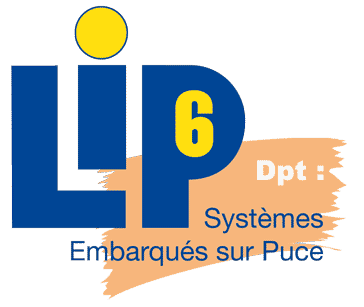| Version 11 (modified by , 13 years ago) (diff) |
|---|
ALMOS distribution for the TSAR many-core
Summary
Running ALMOS on the TSAR virtual prototype requires the installation of several open-source technologies like a GCC cross-compiler for Mips (el), SocLib virtual prototyping library, TSAR related components, and SystemCASS. To simplify the task of building and configuring a correct development environment, ALMOS comes with a stand-alone and ready-to-use distribution.
Mainly, this distribution enables you to:
- Port your own applications and libraries to ALMOS.
- Run these applications on TSAR using several configurations ranging from 4 to 1024 cores.
- Analyse the performance of your applications or the totality of the software-stack on a large-scale many-core.
Upon your needs you can also use this distribution to:
- Validate and evaluate any kernel new features or updates.
- Experiment and develop new parallel programming libraries and run-times for a large-scale single-chip many-core.
- Consolidate/build your own educational materials in the field of operating systems and parallel programming.
- Validate and evaluate any hardware evolution/development in a TSAR based architecture.
Compatibility
The distribution package contains some binary executables (e.g. GCC cross-compiler, TSAR simulator). These programs can run on a Linux based distribution. They were tested on Ubuntu 10.04/12.04 and on Scientific Linux 6.2.
Setup
Download the latest stable distribution from this link. Decompress the .tbz2 file:
tar jxf almos-tsar-mipsel.tbz2
Now you have a sub-directory named almos-tsar-mipsel. In the reset of this page, we refer to the absolute path to this directory as DISTRIB.
Start the simulation
Before any use of the distribution package you need to set some environment variables:
cd DISTRIB source ./SourceMe
Note: by default you have to source this file from its local directory, that is, DISTRIB/. Now got to DISTRIB/test/pf1 and run make sim1:
cd DISTRIB/test/pf1 make sim1
This will launch the TSAR full-system simulator with its 4 tty terminals and one frame-buffer window. You will end by having a shell prompt on the tty1.
The tty0 and tty3 are reserved for the kernel trace and information messages. For a user application, the tty1 represent the stdin and stdout while the tty2 represent the stderr.
Sim1 rule means the simulator of TSAR is configured to one cluster, that is, 4 cores. Using sim4, sim16, sim64 or sim128 lets you start the simulator with (respectively) 4, 16, 64 or 128 clusters of 4 cores each.
Note : although the hardware configuration can be changed at each simulation, there is no need to recompile or regenerate the kernel. The kernel of ALMOS detects the hardware resources at each boot. A user application can get the number of online cores using the standard sysconf call (man sysconf).

